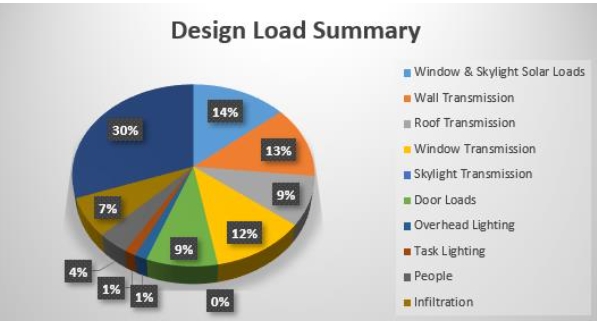Potential of low-value plastic waste (LVPW) in concrete through latrine ring manufacturing
Abstract
In this research, low-value plastic waste (LVPW) is used in concrete as a potential solution for sustainable waste management in the construction industry. In concrete, LVPW is utilized to produce Eco-Ring (Eco-conscious Latrine Ring). The use of a mix ratio of 1:2:3 and 1:2:4 in concrete mixes is studied. The impact of the percentage of recycled plastic on the mechanical properties of the final product is analyzed. The results show that the use of LVPW reduces both strength and unit weight but ensures its solidification. Sufficient strength for latrine rings is maintained, ensuring a balance between structural integrity and waste reduction. LVPW incorporation offers cost savings, with reductions of aggregate use up to 10%–15% in the present analysis. Justified consideration of the impact on mechanical properties, along with potential adjustments to optimize compatibility and address workability/aesthetics, can help maximize the benefits of this technology.
References
[1]Proshad R, Kormoker T, Islam MDS, et al. Toxic effects of plastic on human health and environment: A consequences of health risk assessment in Bangladesh. International Journal of Health. 2017; 6(1): 1-5. doi: 10.14419/ijh.v6i1.8655
[2]Rochman CM, Browne MA, Halpern BS, et al. Classify plastic waste as hazardous. Nature. 2013; 494(7436): 169-171. doi: 10.1038/494169a
[3]Derraik JG. The pollution of the marine environment by plastic debris: A review. Marine Pollution Bulletin. 2002; 44(9): 842-852. doi: 10.1016/S0025-326X(02)00220-5
[4]Thompson RC, Olsen Y, Mitchell RP, et al. Lost at Sea: Where Is All the Plastic? Science. 2004; 304(5672): 838. doi: 10.1126/science.1094559
[5]Kaiser J. The Dirt on Ocean Garbage Patches. Science. 2010; 328(5985): 1506-1506. doi: 10.1126/science.328.5985.1506
[6]Sakib AN, Salma AI, Ahmed M. Plastic waste management and feasibility of fuel production—A case study in Sylhet. Journal of Environmental Technology and Construction Management. 2012; 1(1): 66-78.
[7]Len N. The New Plastics Economy Rethinking the Future of Plastics. World Economic Forum; 2016.
[8]Gourmelon G. Global Plastic Production Rises, Recycling Lags. Vital Signs, Worldwatch Institute; 2015.
[9]Hasan MA, Hoque MA, Ahmed M. Application of Plastic Waste as an Alternative to Coarse Aggregate for Concrete Block Construction. In: Proceedings of the 7th International Conference on Engineering Research, Innovation and Education; 12-14 January 2023; Sylhet, Bangladesh.
[10]Subramani T, Pugal VK. Experimental Study on Plastic Waste as a Coarse Aggregate for Structural Concrete. International Journal of Application or Innovation in Engineering & Management. 2015; 4(5).
[11]Ghernouti Y, Rabehi B, Safi B, et al. Use of recycled plastic bag waste in the concrete. Journal of International Scientific Publications: Materials, Methods and Technologies. 2014; 8.
[12]Kamble SA, Karad DM. Plastic Bricks. International Journal of Advance Research in Science and Engineering. 2017; 6.
[13]Singhal A, Netula O. Utilization of Plastic Waste in Manufacturing of Sand Bricks. In: Proceedings of the 3rd International Conference on New Frontiers of Engineering, Science, Management and Humanities (ICNFESMH-2018); Pune.
[14]Shah R, Garg H, Gandhi P, et al. Study of Plastic Dust Brick Made from Waste Plastic. International Journal of Mechanical and Production Engineering. 2017; 5(10).
[15]Merbouh M, Glaoui B, Mazouz A, et al. Use Plastic Bag Waste in Cement Concrete. Waste Management Symposium EURASIA; 2014.
[16]Soemadijo P, Anindita F, Akib R, et al. A Study of Available Technology for Recycling Low Value Plastic in Indonesia. Journal of Environmental Science and Sustainable Development. 2022; 5(2). doi: 10.7454/jessd.v5i2.1128
[17]Shi Y, Chai J, Xu T, et al. Microplastics contamination associated with low-value domestic source organic solid waste: A review. Science of The Total Environment. 2023; 857: 159679. doi: 10.1016/j.scitotenv.2022.159679
[18]Mahzuz HMA, Tahsin A. Use of Plastic as a Partial Replacement of Coarse Aggregate in Concrete for Brick Classifications. International Journal of Scientific & Technology Research. 2019; 8(8): 883-886.
[19]Darwin D, Charles WDP, Nilson AH. Design of concrete structures. McGraw-Hill Education; 2015.
[20]Mathew P, Ambika KP, Pavitra P, et al. Comparative Study on Waste Plastic Incorporated Concrete Blocks with Ordinary Concrete Blocks. International Research Journal of Engineering and Technology. 2016; 3(5).
[21]Bangladesh Standards and Testing Institution. BDS 208: (2002), Bangladesh Standard. Bangladesh Standards and Testing Institution; 2002.
[22]Local Government Engineering Department of Bangladesh. Local Government Engineering Department of Bangladesh (LGED); 2005.
[23]Hasan A, Islam MN, Karim MR, et al. Properties of Concrete Containing Recycled Plastic as Coarse Aggregate. In: Proceedings of the International Conference on Recent Innovation in Civil Engineering for Sustainable Development (IICSD-2015); DUET, Gazipur.
[24]Hollow and Solid Concrete Blocks. IS (2005). IS 2185-1. In IS Concrete masonry unit: Part-1. Hollow and Solid Concrete Blocks; 2005.
[25]Ji T, Fang H, Zhang R, et al. Automatic sorting of low-value recyclable waste: a comparative experimental study. Clean Technologies and Environmental Policy. 2022; 25(3): 949-961. doi: 10.1007/s10098-022-02418-7
[26]Fu S, Qian Y, Yuan H, et al. Effect of cone angles of a hydrocyclone for the separation of waste plastics with low value of density difference. Waste Management. 2022; 140: 183-192. doi: 10.1016/j.wasman.2021.11.028
[27]Tianchen J, Huaiying F, Rencheng Z, et al. Low-value recyclable waste identification based on NIR feature analysis and RGB-NIR fusion. Infrared Physics & Technology. 2023; 131: 104693. doi: 10.1016/j.infrared.2023.104693
[28]Nizamuddin S, Jamal M, Santos J, et al. Recycling of low-value packaging films in bitumen blends: A grey-based multi criteria decision making approach considering a set of laboratory performance and environmental impact indicators. Science of The Total Environment. 2021; 778: 146187. doi: 10.1016/j.scitotenv.2021.146187
[29]Bening CR, Kahlert S, Asiedu E. The true cost of solving the plastic waste challenge in developing countries: The case of Ghana. Journal of Cleaner Production. 2022; 330: 129649. doi: 10.1016/j.jclepro.2021.129649
[30]Gall M, Wiener M, Chagas de Oliveira C, et al. Building a circular plastics economy with informal waste pickers: Recyclate quality, business model, and societal impacts. Resources, Conservation and Recycling. 2020; 156: 104685. doi: 10.1016/j.resconrec.2020.104685
Copyright (c) 2024 Mushtaq Ahmed, Muhammad Azizul Hoque, H. M. A. Mahzuz, Nazmul Islam Rafi, Md. Jubayer Hossan Salman, Khadijatul Kubra Mim, Krisha Rana, Md. Abdullah Al Ahad, Md. Ariful Islam, Ratan Kumar Roy

This work is licensed under a Creative Commons Attribution 4.0 International License.












